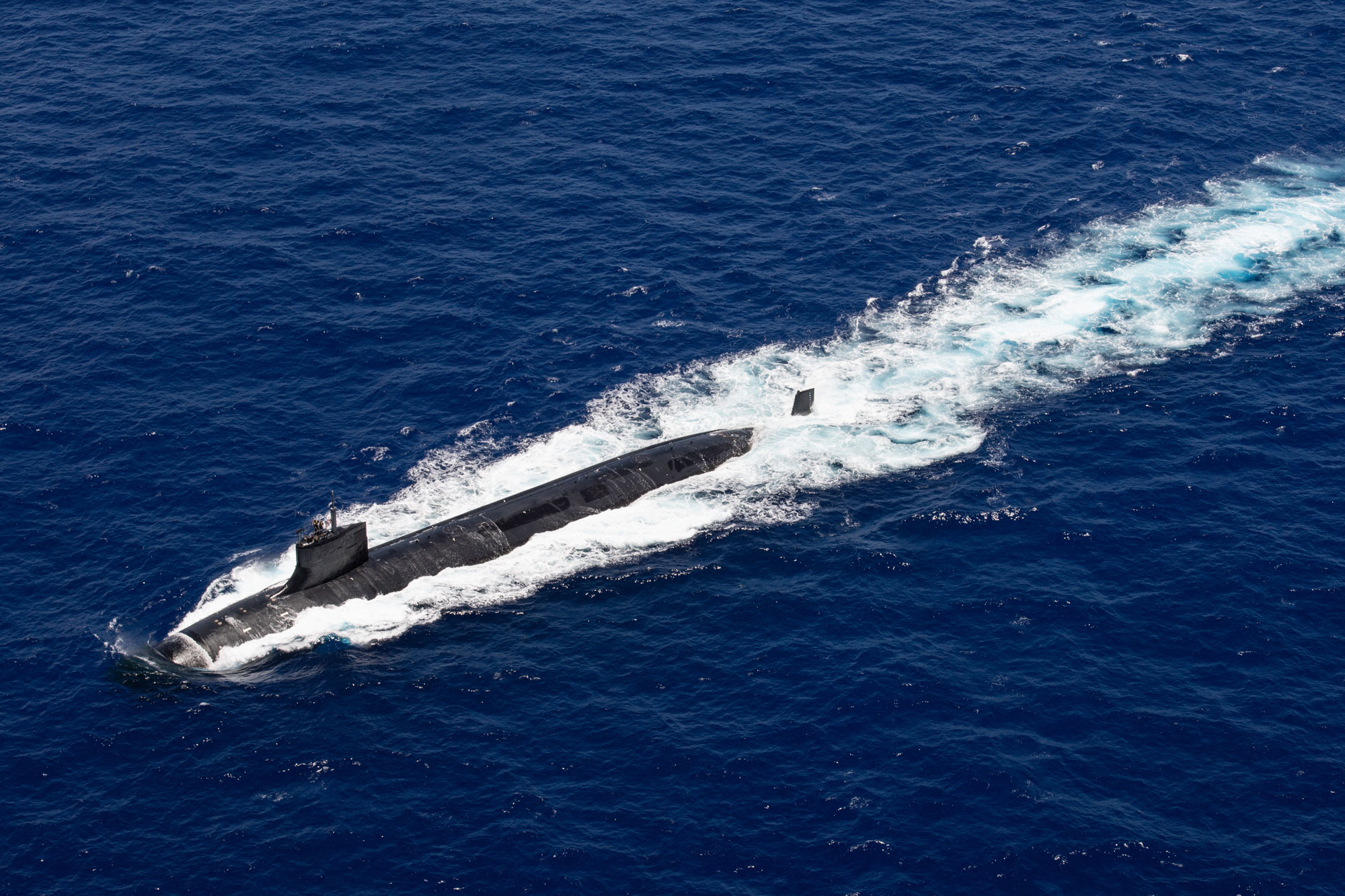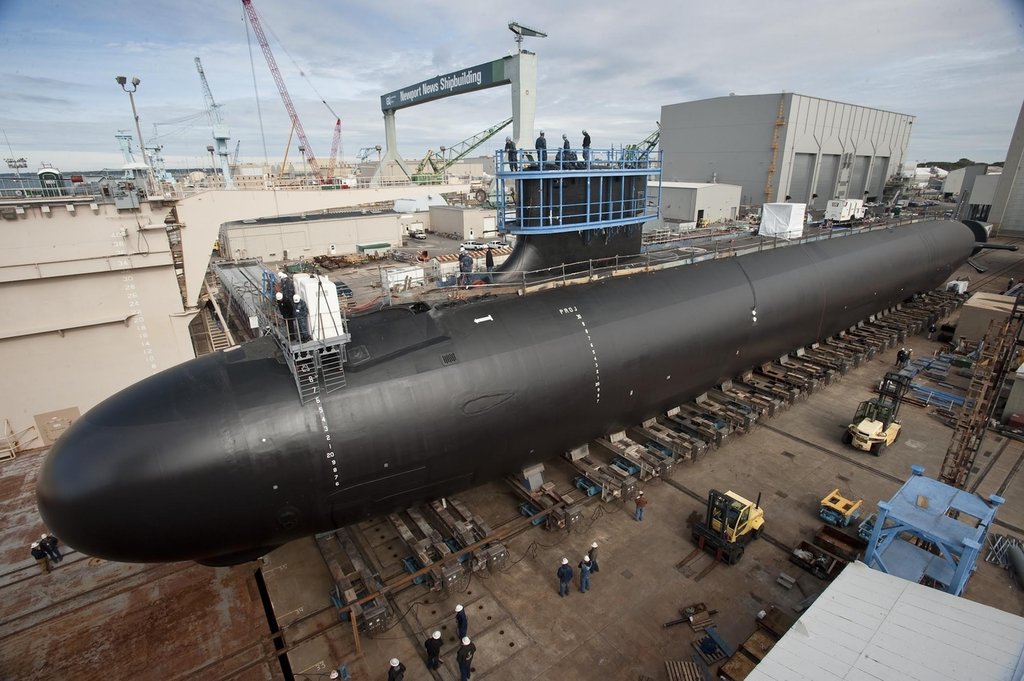Feature
Diminishing returns: the US Navy’s attack boat availability problem
A recent report from the US Congressional Research Service has outlined the current state of SSN availability across the US Navy’s subsurface fleet. Richard Thomas reports.

Seawolf-class fast attack submarine USS Seawolf (SSN 21) transits the Pacific Ocean in 2021. Credit: US Navy
The US Navy (USN) had 31 of 49 nuclear-powered attack submarines (SSN) available for operations in FY2023, with the 18 remaining vessels either in maintenance or idle awaiting their turn in a shipyard, according to a report by the US Congressional Research Service (CRS).
In total, 37% of the USN’s SSN fleet was unavailable for operations in FY2023, with 14 boats listed as undergoing maintenance and four vessels described as “idle” and still to undergo depot maintenance. The ratio of active/inactive has worsened slightly from FY2022, which had 33% of the SSN force idle or undergoing maintenance.
The ratio of active SSNs to those undergoing maintenance or idle is significantly worse compared to FY2015, which saw just 19% of the force unavailable for operations from a fleet of 53 boats.
The USN is currently reviewing its forces structure as the Department of Defense looks to update an older 2016 strategy that called for a 355-ship naval fleet, including some 66 SSNs. Further studies indicated that the USN could look to operate a fleet of up to 72 SSNs, alongside the nuclear-powered ballistic missile submarines (SSBN) and nuclear-powered guided missile submarines (SSGN).
By the end of FY2022 the USN had 50 SSNs in service, comprised of 26 Los Angeles class, three Seawolf class, and 21 Virginia-class submarines, stated the CRS in its 6 July report.
The CRS states that the USN has been acquiring Virginia-class SSNs since FY1998, and a total of 38 have been procured through FY2023. Since FY2011, Virginia-class boats have been procured at a rate of two per year.
Without updated long-term planning, the US Navy cannot be certain that the fiscal year 2024 budget request will be sufficient to meet the production schedule it has planned for these submarine classes
– US Government Accountability Office
The majority of Virginia-class boats procured in FY2019 and following years are built with the Virginia Payload Module (VPM), an additional, 84ft-long, mid-body section equipped with four vertical launch tubes for storing and launching additional Tomahawk cruise missiles or other payloads. When procured at a rate of two boats per year, VPM-equipped Virginia-class SSNs have an estimated procurement cost of about $4.3bn per boat, the CRS reports.
Under the USN’s FY2024 30-year (FY2024-FY2053) shipbuilding plan the SSN force would reach a minimum of 46 boats in FY2030 and grow to 60, 69, or 63 boats by FY2053.
However, the USN’s fleet of SSNs could be reduced by up to 10% in the early-2030s should approval be given by the US Congress for the sales of three Virginia-class SSNs to Australia under the AUKUS SSN programme, with a further two boats on option.
Shipyard capacity impacting availability, production
A significant factor in the USN’s ability to maintain availability levels across its fleet is due to the capacity of shipyards to process maintenance periods in time to welcome the next boat in line. Delays to individual maintenance programmes has a cascading impact on subsequent work periods, creating a chain of delays with little spare industrial capacity to react to such issues.
There are also corresponding delays in the drumbeat of work needed to ensure the production and delivery of the planned two Virginia class per year, with similar issues related to industrial capacity.
In a bid to solve such problems, non-traditional manufacturers of submarines, more accustomed to the build of surface warships, have been charged with building blocks for the ongoing Virginia builds.
In January 2023 Austal, which builds the Independence variant Littoral Combat Ship, secured a contract from General Dynamics for structural assembly fabrication in support of the USN’s US Navy Virginia-class submarine programme, in a continuation of previously announced efforts to support Electric Boat in its subsurface sector manufacture.
Under the USN’s FY2024 30-year (FY2024-FY2053) shipbuilding plan the SSN force would reach a minimum of 46 boats in FY2030 and grow to 60, 69, or 63 boats by FY2053.
– Congressional Research Service
The partnership will see Austal USA construct and outfit Command and Control Systems Modules (CCSM) and Electronic Deck Modules (EDM) for the Virginia- and Columbia-class programmes. General Dynamic Electric Boat commenced on-the-job training with Austal in April 2022 to provide certification for shipyards workers, with construction commencing in November that year on two tanks for a Virginia-class submarine.
According to Austal release in December 2022 the first CCSM was scheduled to arrive at the company’s Mobile shipyard in late January 2023 for initial outfitting efforts. The work will support a “gradual ramp up to full fabrication and outfitting of CCSMs and EDMs” across both submarine classes beginning in 2026, the company stated.
Strategic deterrent priorities impacting SSN manufacture
In January this year a pair of reports conducted by the US Government Accountability Office (GAO) laid bare the challenges the USN faces in its surface ship sustainability, as well as in the recapitalisation of the undersea arm of the country’s nuclear defence triad.
Published in late January this year, the reports into the USN found that from FY2011-2021, the ship classes reviewed faced “persistent and worsening challenges” including a decrease in the number of hours a ship is available for operations or training.
These challenges included an increase in the number of working ship parts removed and used elsewhere due to parts shortages; an increase in casualty reports—i.e., reports of events that impair a ship’s ability to do its job; and an increase in maintenance delays. While not specified in the GAO report, the practice of part cannibalisation is also commonplace for USN submarine maintenance.

The Virginia-class attack submarine Minnesota (SSN 783) under construction at Huntington Ingalls Newport News Shipbuilding in 2012. Credit: US Navy courtesy of Newport News Shipbuilding
In its report into USN submarine processes, the GAO stated that the USN “lacks insight” into the $132bn programme to develop and purchase 12 Columbia-class SSBNs, the first of which is intended to be delivered in April 2027. The GAO said that the USN had not conducted a schedule risk analysis, used to identify and manage risks to achieving delivery dates.
“Without a statistical schedule risk analysis, programmes have limited insight into how schedule risks could affect the likelihood of achieving key programme milestones, including delivery, and the amount of margin—or a reserve of extra time—needed to manage critical risks and avoid delays,” the GAO stated.
The GAO report found that after more than a year of construction on the lead Columbia submarine, shipbuilders were facing delays due to design, materials, and quality challenges. The strategic importance of the sub-surface element of the US Government’s nuclear deterrent is such that shipbuilders said that staff originally working on the Virginia-class SSN programme were being redirected to the Columbia build, contributing to delays to SSN manufacture.
“Without updated long-term planning, the US Navy cannot be certain that the fiscal year 2024 budget request will be sufficient to meet the production schedule it has planned for these submarine classes,” the GAO reported.